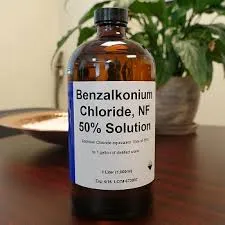polycarboxylic acid examples
Polycarboxylic Acids Structure, Properties, and Applications
Polycarboxylic acids are a class of compounds that contain multiple carboxylic acid functional groups. Characterized by their ability to form hydrogen bonds and their acidic nature, these acids have gained significant attention in various fields, including organic chemistry, materials science, and pharmaceuticals. This article explores several examples of polycarboxylic acids, their structures, properties, and applications.
One of the simplest and most commonly encountered polycarboxylic acids is oxalic acid (C₂H₂O₄). It contains two carboxylic acid groups and is commonly found in various plants, such as spinach and rhubarb. Oxalic acid is used in the textile industry for dyeing and printing, as well as in the cleaning of metal surfaces. Due to its ability to form insoluble calcium oxalate, it also plays a role in the formation of kidney stones in humans when consumed in high quantities.
Polycarboxylic Acids Structure, Properties, and Applications
Succinic acid (C₄H₆O₄), another well-known polycarboxylic acid, contains two carboxylic acid groups separated by two methylene units. It has gained popularity in the food and beverage industry as a flavor enhancer and a preservative. Additionally, succinic acid is a versatile precursor in the production of bioplastics, solvents, and pharmaceuticals. Its bio-sourced production from renewable resources highlights its importance in sustainable chemistry.
polycarboxylic acid examples

A more complex example of a polycarboxylic acid is citric acid (C₆H₈O₇). It features three carboxylic groups and is widely known as a natural preservative found predominantly in citrus fruits. Citric acid's chelating properties make it valuable in food preservation and as an acidifier. Beyond its culinary uses, citric acid is utilized in cosmetics and cleaning products due to its ability to adjust pH levels and enhance product stability.
Another notable polycarboxylic acid is tartaric acid (C₄H₆O₆), which contains two carboxylic groups and is predominantly sourced from grapes. Tartaric acid is primarily used in the winemaking process to stabilize wine's tartness and prevent unwanted oxidation. Moreover, it finds usage in the culinary world as a whipping agent for egg whites and in the baking industry as a leavening agent combined with baking soda.
Moving towards the realm of polymers, polycarboxylic acids play a critical role in the development of polyacrylic acid (PAA), a water-soluble polymer that possesses multiple carboxylic acid groups along its backbone. Due to its hydrophilic properties, PAA is widely used in various applications, including as a superabsorbent in diapers, in coatings, and in medical products as a drug delivery system.
In conclusion, polycarboxylic acids showcase a diverse range of structures and properties that make them valuable in numerous applications. From natural sources to synthetic preparations, their functionality spans across various industries, including food, pharmaceuticals, and materials science. As research continues to evolve, the potential for these acids to be harnessed for innovative applications remains promising, underscoring their importance in both everyday life and advanced technologies. Their ability to interact with other chemical species and facilitate reactions makes polycarboxylic acids a significant area of study in the realm of chemistry.
-
lk-319-special-scale-and-corrosion-inhibitor-for-steel-plants-advanced-solutions-for-industrial-water-systemsNewsAug.22,2025
-
flocculant-water-treatment-essential-chemical-solutions-for-purification-processesNewsAug.22,2025
-
isothiazolinones-versatile-microbial-control-agents-for-industrial-and-consumer-applicationsNewsAug.22,2025
-
scale-inhibitor-key-solutions-for-water-system-scale-preventionNewsAug.22,2025
-
organophosphonates-versatile-scale-inhibitors-for-industrial-water-systemsNewsAug.22,2025
-
scale-and-corrosion-inhibitor-essential-chemical-solutions-for-water-system-maintenanceNewsAug.22,2025





